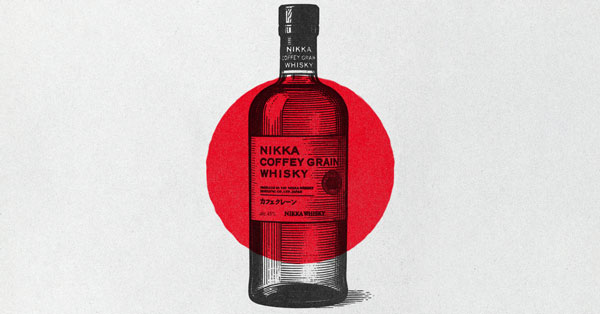The Rise of Japanese Whisky: A Unique Journey
While Scotland has traditionally been seen as the home of premium whisky, Japan has steadily emerged as a formidable contender in the whisky world. The genesis of my appreciation for Japanese whisky occurred over a decade ago during a trip to Texas, where a bartender urged me to try an unknown spirit, introducing me to a remarkable blend that would shift my perception of whisky forever.
The Evolution of Japanese Whisky
Historically, Scotch whisky held the title of premium distillate, renowned for its traditions and flavors. However, a shift began as Japan adopted and adapted Scotch-making techniques. The turning point came in 2001 when Japanese whisky secured the top accolade in a prestigious blind tasting by Whisky Magazine, marking the beginning of its recognition on the global stage.
Renowned distilleries such as Suntory and Nikka have since established reputations synonymous with quality. These brands consistently shine in competitions worldwide, demonstrating that the narrative surrounding the best whisky is changing.
Distinctive Qualities of Japanese Whisky
At its inception, Japanese whisky closely mirrored Scotch in its production methods, incorporating traditional distillation processes, ingredients, and the spelling of “whisky.” Early distillers were educated in Scotland, ensuring a solid foundation in the craft. Yet as time passed, Japanese whisky carved out its unique niche.
- Climate Variability: The fluctuating climate of Japan, characterized by humid summers and cold winters, enhances the aging process, resulting in nuanced flavors.
- Water Quality: Japanese spring water, often sourced from mountainous regions, adds a distinctiveness, imparting a soft and clear texture to the spirit.
- Mizunara Oak: This indigenous oak, although challenging to cultivate and age, contributes unique flavors like sandalwood and spices that are highly prized in Japanese whisky.
- Blending Techniques: Japanese distilleries often blend internally, focusing on producing diverse whisky styles within a single facility, resulting in balanced and complex flavor profiles.
In contrast to the robust, peaty profiles commonly found in many Scotch whiskies, Japanese expressions emphasize subtlety and depth. Aromas of cherry blossoms, green apples, and a hint of white pepper create a more delicate tasting experience, with flavors unfolding gradually on the palate.
A Historical Overview
The inception of Japanese whisky can be traced back to Shinjiro Torii, who transitioned from a pharmaceutical wholesaler to the founder of Japan’s first whisky distillery, Yamazaki, in 1923. Collaborating with Masataka Taketsuru—who honed his whisky-making skills in Scotland—Torii set the stage for what would become a thriving industry.
Today, Suntory and Nikka stand as pillars of Japanese whisky, continuing the legacy established by Torii and Taketsuru.
Noteworthy Distilleries
Japanese whisky is influenced greatly by the geographical and climatic conditions of its distilleries. Each location brings forth unique characteristics in the final product.
Yamazaki Distillery
Situated near Kyoto, Yamazaki benefits from accessible clean water and diverse still designs that help craft its signature soft, mineral-rich whiskies.
Hakushu Distillery
Founded in the Japanese Alps in 1973, Hakushu is known for its fresh whiskies that exhibit light smokiness due to the high-altitude conditions in which they are produced.
Yoichi Distillery
Part of the Nikka family, Yoichi retains traditional whisky-making practices, including the use of coal-fired pot stills, resulting in a strong, bold flavor.
Chichibu Distillery
This newer distillery, operational since 2008, focuses on small-batch production and has rapidly gained international acclaim for its high-quality whiskies.
The Scarcity Factor
As the esteem for Japanese whisky has grown, so too has its demand, leading to reduced availability of sought-after bottles. Some expressions, such as the Hakushu 12 and Yamazaki 12, faced production halts due to insufficient aging stock. Consequently, consumers looking for quality options may find themselves considering non-age-statement selections, which are increasingly available.
Starting Your Japanese Whisky Journey
If you’re interested in experiencing Japanese whisky, consider these options as starting points:
Hibiki Japanese Harmony
A blend crafted for balance and smoothness, offering floral notes with hints of chocolate and light oak, available typically for $80–$110.
Nikka From the Barrel
This blend features depth and spice, with a flavor profile of clove, cherry, and toffee, and is commonly priced around $80–$100.
Nikka Coffey Grain
Utilizing traditional Coffey stills, this whisky presents a sweet and smooth palate, reminiscent of bourbon, often found for $55–$90.
Suntory Toki
An accessible and light option, Toki features hints of apple and honey, ideal for highball cocktails, usually priced under $50.
Hakushu 12 and Yamazaki 12
For those willing to search, these are exceptional single malts that embody soft fruity and oak flavors but may command prices upwards of $160, depending on the market.
Conclusion
The journey through the landscape of Japanese whisky reveals an extraordinary evolution and a commitment to craftsmanship that rivals any global counterpart. As interest continues to swell, exploring this unique category allows whisky enthusiasts to engage with the rich heritage and innovative practices that define Japan’s whisky-making tradition.
